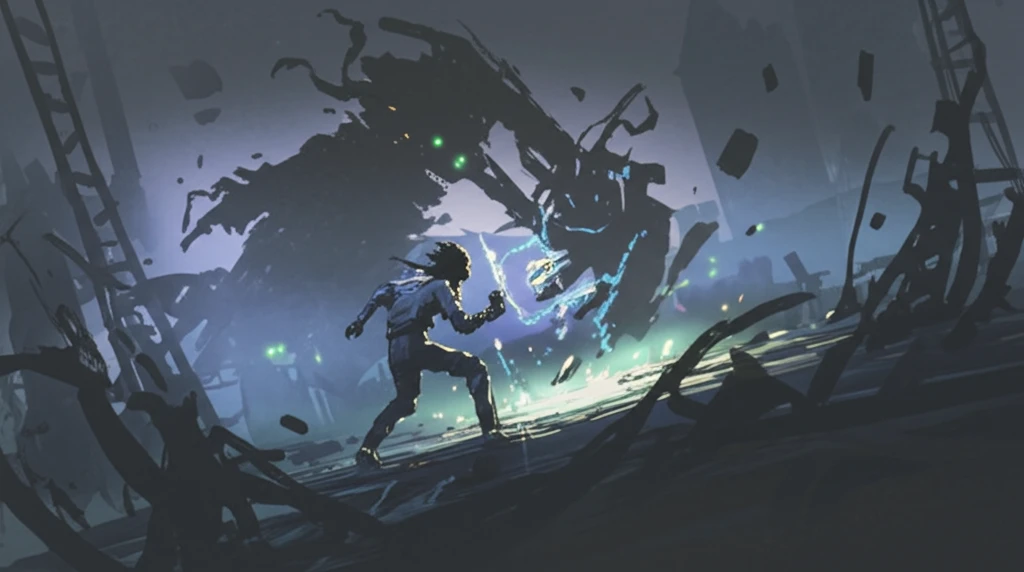
Level Up Your Game: How to Combat Video Game Piracy and Keep the Industry Alive
"Explore the shadowy world of video game piracy and discover the innovative strategies developers are using to fight back and protect their creations."
"For as long as there has been stuff, people have wanted that stuff for free." This sentiment, while simple, encapsulates the driving force behind the persistent issue of video game piracy. From designer knock-offs to illegally downloaded music, the desire for free content has plagued various industries, and video games are no exception. Creating pirated copies, whether through physical duplication or digital downloads, is against the law. Those engaging in these activities face severe civil and criminal penalties in many countries.
While obtaining a game for free might seem like a victimless act, the reality is far more complex. The short-term benefit of free entertainment for the user belies the significant harm inflicted on game developers. Piracy undermines their ability to invest in future projects, potentially leading to fewer games with less innovation. Every legitimate purchase subsidizes the creation of new titles, offering better graphics, sound, interfaces, storylines, and user experiences. In contrast, pirated copies only benefit the pirate, diverting resources away from legitimate development and potentially driving creators out of business.
Over the past few decades, piracy has become increasingly accessible. The availability of technology has made copying a video game as simple as ripping a music CD. Digital color copiers produce high-quality CD inserts, and printing technology allows for direct printing on CDs. The internet, with its multitude of torrents and peer-to-peer sharing platforms, provides pirates with an unlimited distribution market and low operating costs. However, the industry isn't standing still. Game developers are employing a wide range of preventative and enforcement measures targeting different aspects of the problem.
Decoding the Anti-Piracy Playbook: Legal, Business, and Tech Tactics

The battle against video game piracy is fought on multiple fronts, employing a mix of legal, business, and technological strategies. Each approach aims to address different facets of the problem, and a well-rounded strategy often combines elements from each.
- Legal Solutions: Anti-piracy laws and enforcement efforts form the legal backbone of the fight. Copyright and trademark laws protect intellectual property, and legislation like the Digital Millennium Copyright Act (DMCA) stiffens penalties for online piracy and circumvention of copyright protection measures.
- Business Solutions: Innovative business models, such as free-to-play (F2P) games and open pricing, offer alternatives to traditional sales models. F2P games allow players to download and play for free, with revenue generated through in-game purchases. Open pricing lets players set their own price, fostering a sense of value and encouraging legitimate purchases.
- Technological Solutions: Digital Rights Management (DRM) technologies aim to prevent unauthorized copying and distribution. These methods range from simple serial number entry to sophisticated software that detects illegal copies. However, DRM can be controversial, as it sometimes inconveniences legitimate players.
- Real-World Examples: Some companies chose an unconventional approach to educating its user base about the dangers of piracy. The game punishes those who downloaded an illegal copy by making it impossible to succeed.
The Future of Gaming: A Collaborative Fight Against Piracy
Video game piracy is a persistent and evolving challenge, but the industry is far from defeated. By embracing a multi-faceted approach that combines legal protections, innovative business models, and technological safeguards, developers can effectively combat piracy and foster a sustainable future for gaming. Open communication with players, understanding their needs, and providing value-added services can further deter piracy and encourage legitimate engagement. The key lies in collaboration – between developers, governments, and players – to create a gaming ecosystem where creativity and innovation can thrive.
